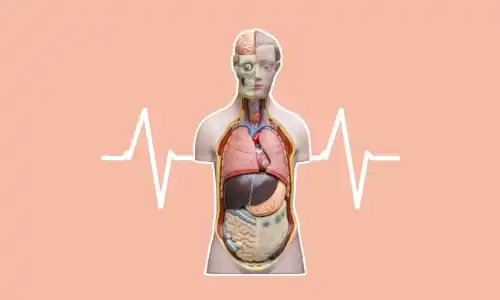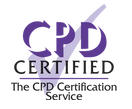
Learn the basics of
Physiology
The goal of this course is to help develop your foundation knowledge about the field as well as to help you unpack and gain insight into various concepts of how physiology fits in with our daily lives. This course will provide you with the theory of functional and applied physiology and we strive to integrate learning with practical activities to provide you with the ability to conceptualise critical reasoning and apply your knowledge when viewing the world through the lens of physiology.
5,681
Graduates
All levels
Certified

Course details
MODULE 1
Diploma in Physiology
MODULE 1
Diploma in Physiology
1.Physiology is Life
The main focus of this lesson is to introduce you to physiology, show you how physiology is relevant to your everyday life and why it forms a pivotal part of life itself. You will be introduced to one of the important organs - the heart and how it is the centre of life for the body. You will learn basic physiological terminology that will introduces you to the worlds of scientific communication.
2.Drop the Beat
We build on our knowledge and gain better insight to the heart's functionality and why it is such an important part of survival. We learn more about what heart rate is, what this measurement is used for, how it is maintained, how it is changed and why it changes. At the end of the lesson we have a challenge and a practical assignment.
3.Circulatory System 101
We now shift our focus towards understanding how two important systems (the cardiovascular and respiratory system) aka the circulatory system, work together. We look at manual manner in which human have used CPR to replicate the same effect of a circulatory system in saving lives. We discover the importance of breathing and why it is essential for life.
4.Breath In, Breath Out
Today's lesson is geared to help you understand how the lungs help with the maintenance of the body and provides oxygen to the organs. We will discuss characteristics and features of the lungs that are needed in order for the lungs to supply oxygen and expel the waste product carbon dioxide.
5.Who's Fuelling Who? (The digestive system)
How do the systems that maintain our bodies functions maintain themselves? What allows these systems to run in an ongoing manner? We gain insight as to why energy/ fuel is needed to keep these process running and are introduced to the digestive system and how it helps the body to fuel itself.
6.Hungry to learn!
How does the digestive system ask us to eat to replenish its energy stores? The body uses various. In today's lesson you will learn more about salivating, seeing food and then eating it you will also learn terminology that is linked to the digestive system.
7.The Controller (The Nervous System)
In this lesson, we look at the main controller, the nervous system. The nervous system is there to respond to both internal and external changes that occur within the body. We all know that life is not a static state, various events occur within our body daily. Therefore, the nervous system helps in the regulation of these changes and so that we can function as a living, interactive organism within our environment.
8.Applied Physiology 101
For our module finale we will wrap up by recapping what we have learnt and will apply the knowledge gained over the last few weeks to the scenario (from lesson 1) to help us understand how physiology forms part of our everyday lives.
MODULE 2
Intermediate in Physiology
MODULE 2
Intermediate in Physiology
1.Keeping Things Upright with the Skeleton
The main focus of this lesson is to introduce you to the systems that are responsible for giving the human body structure. You will be introduced to the skeleton and the various divisions and anatomical bones that are connected to form the skeleton.
2.Having Your Back
We look closer at the spinal cord that has our back and always ensures that we walk up straight. We identify various condition which cause the spinal cord not to function to its full capacity and understand the effects of serious injuries to the spinal cord.
3.We've Got a Bone to Pick with Bones
TBones, we can not live without them as they are the building blocks of our skeletal structure. We gain insight into the various bones that are part of the human body and we understand how the health of bones are important to ensure we strengthen them as our primary structure.
4.Joining Bones Together
Ever wonder what keeps your muscles and bones working together? Our joints, tendons and ligaments are the extra special tissues that protect our muscles and are essential for the movement to occur.
5.Muscles
In lesson 5 we examine muscles in more detail. We zoom in even closer and understand the different muscle fibres and the outcomes that each muscle fibre has on functionality. We gain insight into the level of how skeletal muscle is structure from its smallest subunit into a complete muscle.
6.Muscle Contraction
If you have ever wondered how the muscles in our body results in movement, it is due to contraction and relaxation of the muscles. We discover the physiology behind how a muscle contraction occurs and introduce you to the concept that describe the process of a contrition known as the sliding filament theory.
7.Protecting Our Muscles
In lesson 7 we unravel our knowledge about muscles and understand the physiology behind warming up muscle, cooling down and events that occur due to over worked muscles.
8.Muscle Phenomena & Case Study
After all the talk about muscle and understanding the effects of various conditions that affect muscles we gain insight into how muscle are repair and we apply our knowledge of muscle fibres into case study. Ending our module on a musculatastic note by applying our knowledge into the real world setting.
MODULE 3
Advanced in Physiology
MODULE 3
Advanced in Physiology
1.What is Immunology
If you're wondering how your body can stay healthy and protect itself in our external environment that is often filled with various microorganism, then stay tune as in our first lesson of module 3 we understand what immunology is. We define what microorganism is and we unpack the basic knowledge of immunology.
2.Physical Barrier the Skin
In lesson 2 we face our first line of defence of our immune system, the skin. The skin serves as the primary physical barrier to ensure that our internal environment is protected from out external environment. We look at the facts that give rise to the characteristics and features of the skin and how our skin serves as health indicator.
3.Covering our Knowledge About the Skin
In lesson 3 we uncover our knowledge about the largest organ of our body our skin. We recap on our knowledge about the skin that is our first line of defence by acting as physical barrier. Here we zoom in on a tissue level and understand the various layers of the skin and other functional roles of the skin. As well as a brief introduction to special features found on the skin such as nails and hair and their role.
4.Innate Immunity
What happens when pathogens get into the body despite the physical barrier the skin? Our next line of defence is our innate immune system. We take a integrated look at the cells of the innate immunity and how they help the human body to protect itself.
5.Adaptive Immunity
If you wondering why you become immune to disease that you have had before we taking a closer look to the adaptive immune system. We learn more about how your body puts various systems in place to continue and protect us from pathogens.
6.Assisting the Immune System
In lesson 6 we dive in and look at ways we can take precaution before developing diseases. All the talk about boosting your immune system and precaution before the development of diseases we asking the questions and use our critical thinking to answer these questions. We tap into the science behind it and does it truly help the body remain healthy and help us suppress the development of sessional sickness if we boost our immune system ? We learn more about medical treatment that has been developed to help our immune system. We look at what vaccines are and what are the principles around using vaccines. We gain insight into antibiotics and what they do to help with fighting off pathogens.
7.Accepting or Rejecting the Outside World
In Lesson 7 we look gain insight into medical usage of transplantation and blood transfusion. Here we understand the limitation that is linked to these method based on the immunological response of the body. We open the discussion to modern day approaches that may limit the immunological effect.
8.Disorders of the Immune System
After covering the basics of what the immune system is, in our last lesson we wrap up the module by looking at what could go wrong with the immune system itself. We learn more about what happens when we become sensitive to our immune systems response. Unpack there various disorders linked to the immune system.
